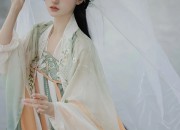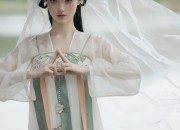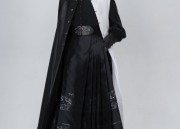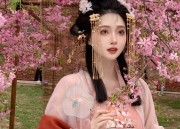The Splendor of Hair Decorations in Traditional Hanfu Fashion
In the realm of Traditional Chinese culture, Hanfu fashion represents a distinctive and vibrant aspect of historical attire. This attire encompasses not only clothing but also a myriad of accessories that enhance its beauty and elegance. Among these, hair decorations play a pivotal role, embodying both practicality and artistic expression.

The art of hair decoration in Hanfu dates back to ancient times, reflecting the cultural and historical evolution of China. These decorations are not mere trinkets but are deeply rooted in the cultural practices and traditions of the Chinese people. From simple hairpins to intricate hair knots and elaborate hair ornaments, each element tells a story of craftsmanship and cultural significance.
In Hanfu fashion, hair is often styled in various ways to showcase the beauty of the hair texture and to symbolize the wearer's status and personality. The most common hairstyles include the "bun" and the "knot," which are achieved through intricate braiding techniques and adorned with hairpins and other accessories. These hairstyles not only serve to enhance the wearer's appearance but also reflect their social status and occasion.
The hair decorations themselves are a testament to the skilled craftsmanship of the past. These range from exquisite hairpins made of precious materials like jade and gold to intricate hair flowers and ribbons that add a touch of color and vibrancy to the hair. These decorations are often imbued with symbols that reflect the wearer's values and beliefs, making each piece unique and personal.
Moreover, hair decorations in Hanfu fashion serve as a medium for cultural expression. They often incorporate elements from Chinese mythology and folklore, reflecting the rich cultural heritage of China. For instance, certain hairpins may be shaped like dragons or phoenixes, symbolizing power and good fortune respectively. These symbols not only enhance the beauty of the hairstyle but also serve as a reminder of the wearer's cultural identity and values.
Furthermore, hair decorations in Hanfu fashion have also evolved over time, adapting to changing trends and styles. While traditional elements remain integral, modern designers have introduced new elements and techniques that blend traditional craftsmanship with contemporary design elements. This fusion results in hair decorations that are both traditional and modern, reflecting the wearer's love for both ancient and contemporary culture.
In conclusion, hair decorations in Hanfu fashion are not just accessories but are an integral part of Chinese culture and history. They embody both practicality and artistic expression, reflecting the wearer's identity, values, and cultural heritage. As Hanfu fashion continues to evolve, hair decorations will continue to adapt, preserving the rich cultural heritage of China while embracing contemporary elements of design and creativity.
Today, these hair decorations are not just worn by those who practice Hanfu fashion but have also gained recognition among those who appreciate traditional culture and artistry. They serve as a bridge between the past and present, connecting generations through a shared cultural heritage that is both beautiful and meaningful. As such, they continue to thrive in modern times, evolving with changing trends and styles while preserving their rich cultural roots.






